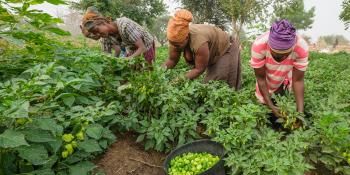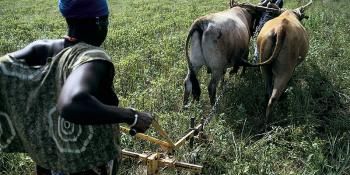A watershed approach to building climate resilience in Nepal’s mountain eco-regions

Summary
The research was implemented in collaboration with the International Water Management Institute (IWMI).
The Himalayan region is highly sensitive to climate change due to the high variation in altitudes. Increased temperatures are likely to change cloud cover and rainfall patterns, melt ice caps and glaciers, and reduce snowfall. This puts rivers, tributaries, catchments, and watersheds at the risk of flooding, landslides, soil erosion, drought, and intense rain during the monsoon. In this context, using watersheds as a unit for natural resource management provides an effective approach to adapt to climate change, since these natural phenomena often transcend administrative boundaries. The watershed approach allows for the analysis of entire natural systems in the context of social conditions, and makes it easier for communities to understand the impact of their activities.
Nepal’s Pilot Program for Climate Resilience (PPCR) project, ‘Building Climate Resilience of Watersheds in Mountain Eco-Regions,’ implemented in collaboration with the Asian Development Bank (ADB) and Department of Soil Conservation and Watershed Management (DSCWM), adopts a watershed approach to increasing resilience. The PPCR is a targeted program within the Climate Investment Funds (CIF), tasked with supporting countries in their transition to climate resilient development pathways, in line with national goals for poverty reduction and sustainable development. IWMI conducted a climate change vulnerability assessment of mid-hills and mountain regions of Nepal, and provided recommendations concerning river basins most vulnerable to climate change. IWMI also undertook modeling and analysis of these river basins, to help plan effective scenarios for increasing climate change resilience. DSCWM selected pilot project sites for project implementation based on the vulnerability assessment, and chose watershed interventions based on IWMI’s modelling and analysis.
Key facts
- Watershed approaches allow for analyses beyond administrative boundaries, encompassing both social and natural factors.
- IWMI’s vulnerability assessment was used by the ADB and DSCWM to design the watershed component of Nepal’s USD 28 million PPCR project ‘Building Climate Resilience of Watersheds in Mountain Eco-Regions’.
Lessons: key elements of success
- Vulnerability assessments allow adaptation interventions to be targeted to areas that are the most at-risk of catastrophic climate change impacts.
- Both climate data and socioeconomic data were used in order to assess human and ecological vulnerability to climate change, which are both relevant at the watershed level.
Further reading
- Keeping Nepal’s Waters Flowing
- Nepal: Building Climate Resilience of Watersheds in Mountain Eco-Regions
Related research outputs
- Siddiqui S, Bharati L, Pant M, Gurung P; Rakhal B. 2012. Nepal: Building Climate Resilience of Watersheds in Mountain Eco-Regions - Climate Change and Vulnerability Mapping in Watersheds in Middle and High Mountains of Nepal. ADB Technical Assistance Consultant’s Report for Department of Soil Conservation and Watershed Management (DSCWM), Government of Nepal. Kathmandu: Asian Development Bank (ADB).
- Bharati L, Gurung P. 2013. Building CC resilience in the West Seti Basin, Nepal Project Report to ADB and DSCWM. National Conference on Water, Food Security and Climate Change in Nepal. 23-24 November, 2011, Lalitpur, Nepal. Eds. L.Bharati, S. Sijapati, A.Gautam and P.Sapkota. IWMI-Nepal, Kathmandu.


